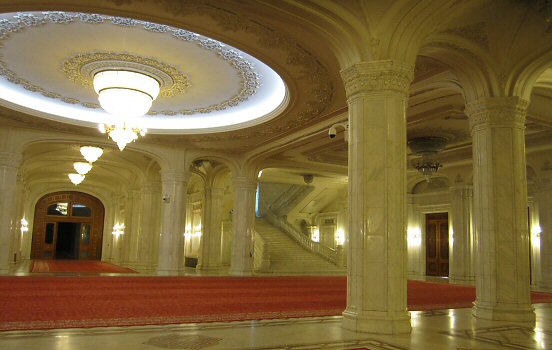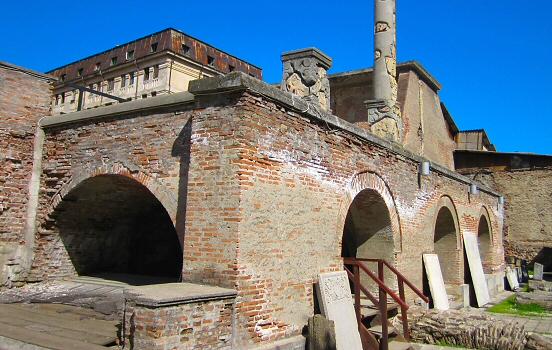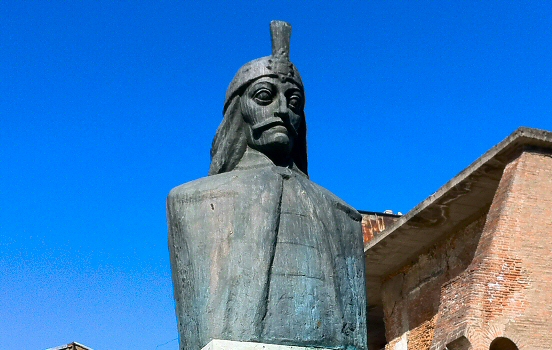Romania doesn’t exactly top the average traveler’s bucket list. No glossy postcards, no luxury resorts promising umbrella drinks and soft towels. Instead, what you get is the kind of raw, unvarnished charm that sticks with you like the scent of wood smoke on an old coat.
The capital Bucharest is a glorious mess. I walk along sprawling boulevards and marvel at the strange mix of western architecture and USSR style buildings. The city throws Soviet concrete at you like a punch, then softens the blow with Belle Epoque grandeur peeking through the cracks. I see old ladies with toothless grins hawking potatoes older than your country, while young girls in expensive sunglasses strut past them like they doesn’t exist in the same reality. The city is a place that feels like it’s still trying to figure itself out after a long, abusive relationship with history.
 Palace of the Parliament in Bucharest.
Palace of the Parliament in Bucharest.
Like an obnoxious old relative that refuse to leave the house, the Palace of the Parliament still stands in central Bucharest. Ceausescu intended it both as a private residence and housing of several national institutions such as the Parliament and Supreme Court. Unfortunately over 20 churches and a lot of the historical part of the city was destroyed to make space for the building, the world’s largest civilian structure.
The destruction was so immense that the word “Ceaushima” was coined, sarcastically linking Ceausescu to the bombing of Hiroshima. This mansion of megalomania was almost finished at the time of his execution in 1989, but only the exterior design as much of the interior still consists of large empty spaces.
 The ruins of Curtea Veche.
The ruins of Curtea Veche.
The city has seen its fair share of despots. A bit to the east is Curtea Veche, the ruins of what once was the residence of Wallachian rulers for two centuries until 1660. Vlad Tepes (better known as Dracula) enlarged the original fortress and surrounded it with stone walls in 1458.
Anthony Bourdain tried to visit these ruins five years ago, but some sort of official asked for a bribe so the team left in disgust. They didn’t even get to film the Vlad statue in front of the ruins.
As I explore the stone walls and spacious rooms inside the ruins, I think back on Ceausescu’s palace. Curtea Veche may not be as spectacular as the pompous Palace of the Parliament, but I will choose the ruins any day.
 Statue of Vlad Tepes (Dracula).
Statue of Vlad Tepes (Dracula).

Comments
No comments yet.
Leave a reply